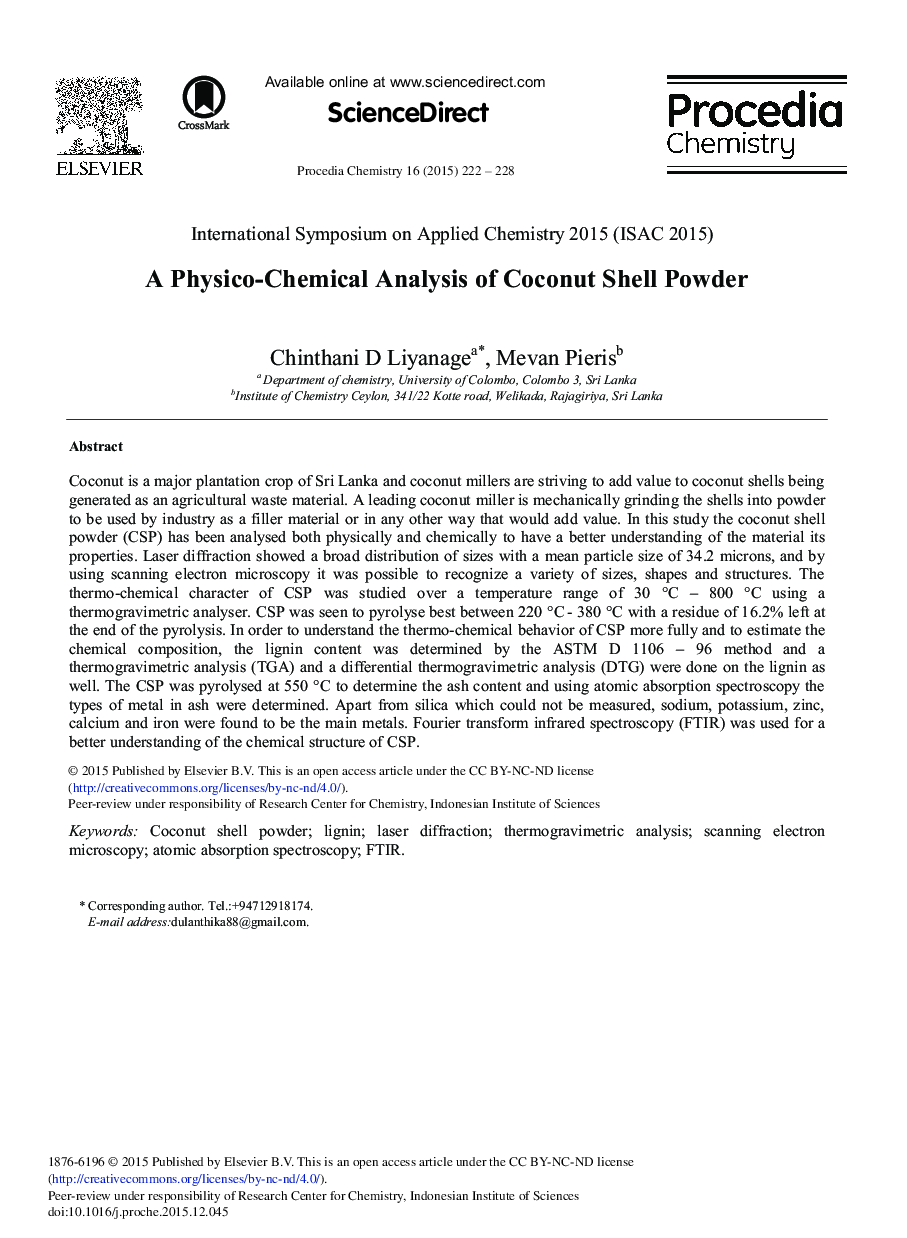| Article ID | Journal | Published Year | Pages | File Type |
|---|---|---|---|---|
| 240216 | Procedia Chemistry | 2015 | 7 Pages |
Coconut is a major plantation crop of Sri Lanka and coconut millers are striving to add value to coconut shells being generated as an agricultural waste material. A leading coconut miller is mechanically grinding the shells into powder to be used by industry as a filler material or in any other way that would add value. In this study the coconut shell powder (CSP) has been analysed both physically and chemically to have a better understanding of the material its properties. Laser diffraction showed a broad distribution of sizes with a mean particle size of 34.2 microns, and by using scanning electron microscopy it was possible to recognize a variety of sizes, shapes and structures. The thermo-chemical character of CSP was studied over a temperature range of 30 °C – 800 °C using a thermogravimetric analyser. CSP was seen to pyrolyse best between 220 °C - 380 °C with a residue of 16.2% left at the end of the pyrolysis. In order to understand the thermo-chemical behavior of CSP more fully and to estimate the chemical composition, the lignin content was determined by the ASTM D 1106 – 96 method and a thermogravimetric analysis (TGA) and a differential thermogravimetric analysis (DTG) were done on the lignin as well. The CSP was pyrolysed at 550 °C to determine the ash content and using atomic absorption spectroscopy the types of metal in ash were determined. Apart from silica which could not be measured, sodium, potassium, zinc, calcium and iron were found to be the main metals. Fourier transform infrared spectroscopy (FTIR) was used for a better understanding of the chemical structure of CSP.
